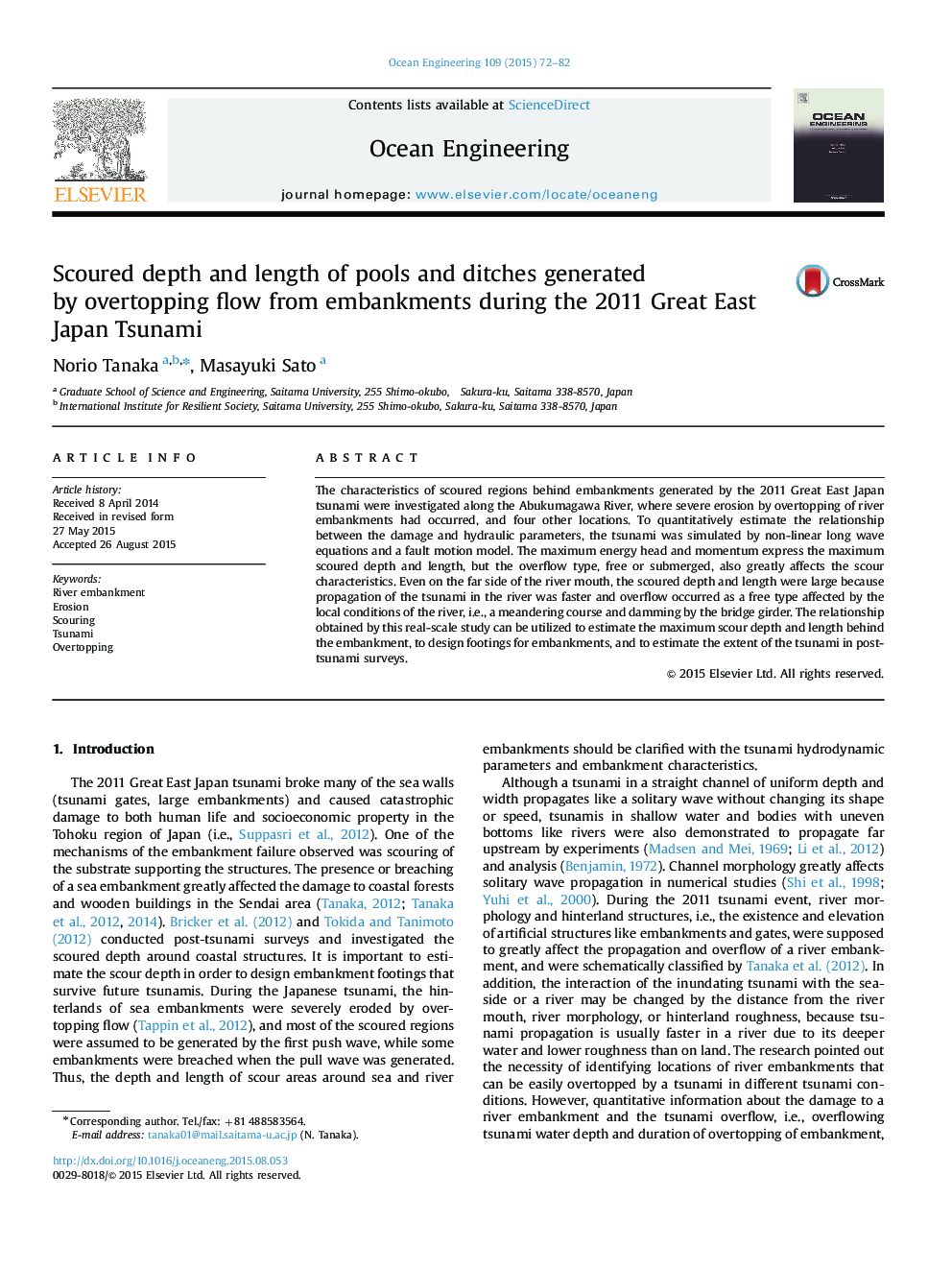| Article ID | Journal | Published Year | Pages | File Type |
|---|---|---|---|---|
| 8065098 | Ocean Engineering | 2015 | 11 Pages |
Abstract
The characteristics of scoured regions behind embankments generated by the 2011 Great East Japan tsunami were investigated along the Abukumagawa River, where severe erosion by overtopping of river embankments had occurred, and four other locations. To quantitatively estimate the relationship between the damage and hydraulic parameters, the tsunami was simulated by non-linear long wave equations and a fault motion model. The maximum energy head and momentum express the maximum scoured depth and length, but the overflow type, free or submerged, also greatly affects the scour characteristics. Even on the far side of the river mouth, the scoured depth and length were large because propagation of the tsunami in the river was faster and overflow occurred as a free type affected by the local conditions of the river, i.e., a meandering course and damming by the bridge girder. The relationship obtained by this real-scale study can be utilized to estimate the maximum scour depth and length behind the embankment, to design footings for embankments, and to estimate the extent of the tsunami in post-tsunami surveys.
Keywords
Related Topics
Physical Sciences and Engineering
Engineering
Ocean Engineering
Authors
Norio Tanaka, Masayuki Sato,
